- News
- Reviews
- Bikes
- Accessories
- Accessories - misc
- Computer mounts
- Bags
- Bar ends
- Bike bags & cases
- Bottle cages
- Bottles
- Cameras
- Car racks
- Child seats
- Computers
- Glasses
- GPS units
- Helmets
- Lights - front
- Lights - rear
- Lights - sets
- Locks
- Mirrors
- Mudguards
- Racks
- Pumps & CO2 inflators
- Puncture kits
- Reflectives
- Smart watches
- Stands and racks
- Trailers
- Clothing
- Components
- Bar tape & grips
- Bottom brackets
- Brake & gear cables
- Brake & STI levers
- Brake pads & spares
- Brakes
- Cassettes & freewheels
- Chains
- Chainsets & chainrings
- Derailleurs - front
- Derailleurs - rear
- Forks
- Gear levers & shifters
- Groupsets
- Handlebars & extensions
- Headsets
- Hubs
- Inner tubes
- Pedals
- Quick releases & skewers
- Saddles
- Seatposts
- Stems
- Wheels
- Tyres
- Health, fitness and nutrition
- Tools and workshop
- Miscellaneous
- Tubeless valves
- Buyers Guides
- Features
- Forum
- Recommends
- Podcast
feature
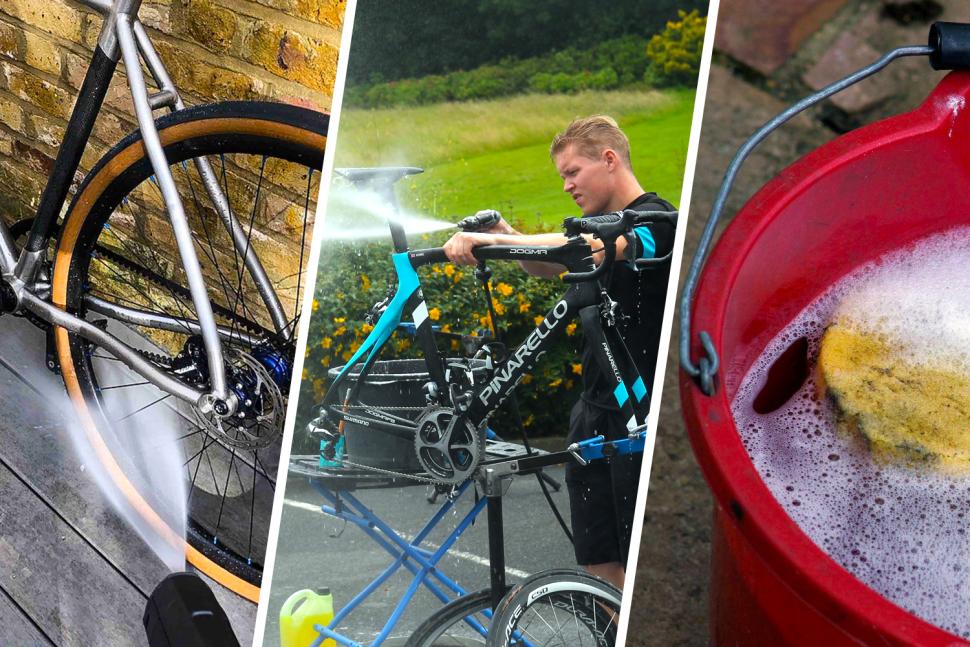 Is it okay to use a pressure washer on your bike? July 2024
Is it okay to use a pressure washer on your bike? July 2024Is it okay to use a pressure washer on your bike? The cases for and against spraying your bike clean
We’ve all heard horror stories of people wrecking bearings and paintwork with pressure washers, so that means you should never take one anywhere near your bike, right? On the flip side, professional teams use pressure washers on their bikes all the time, and they’re a feature of mountain bike trail centres too, so we’re really getting mixed signals here. It’s a controversial subject with arguments both ways, so we’ve asked the experts for a steer to find out once and for all if it's ok to take a pressure washer to your bike.
The case against pressure washers
If you ever mention bikes and pressure washers in the same sentence, you’re guaranteed to get a barrage of warnings: “My mate used a pressure washer and ruined his brand-new wheels", or “I know a bloke who took the decals off his high-end road bike with a pressure washer".
That kind of stuff. But is there any truth in this?
In short, yes. Set a powerful pressure washer to stun and you can certainly damage your bike. That someone who damaged his bearings? Yeah, that probably happened, and messing up the paintwork is sometimes possible too. Bike shop mechanics see the results all the time.
> How to clean your bike - from a quick lick to a full makeover
Many brands advise against the use of pressure washers. Ribble’s advice is typical.
“We would always advise you to avoid cleaning your bike with a pressure washer where possible,” it says. “The high-powered jet emitted from such a device or that of a hosepipe is liable to disperse grease from the bearings whilst forcing dirt/grit into critical components, leading to premature wear.”
Shimano’s take is broadly similar.
“Our advice for cleaning and maintenance of your bike would be to always consult the service manuals for Shimano products, which are freely available at si.shimano.com,” says Jonathan Davis, Shimano’s PR & Communications.
“In any event, we would recommend using warm, soapy water, and to avoid pressure washing for any detailed work – especially for press fit and/or sealed bearings.
“On top of regular cleaning, having your bike tuned up and checked regularly by a professional mechanic is something that should be done based on riding habits and the recommendations from your dealer. It is also important to pay attention to any changes in the sound and feel of how your bike is riding, so if a bike wash has resulted in any creaks or sluggish responses, visit your nearest dealer,” Davis continues.
> How to clean your bike chain
Over at Trek, the guidance is pretty much the same again.
“Trek does not have an official policy on pressure washing but we do advise good old-fashioned common sense,” says the brand’s customer services. “Pressure washers will certainly take off grime and dirt, but they can also blast out lubrication in moving parts – not a good thing. We would suggest not using pressure washers anywhere near bearings on the headset, bottom bracket, hub axle, etc," the American bike brand says.
But what should we do, then? Trek says:
“The best technique we use is a bucket of hot water, with mild detergent and a clean sponge. If you can wash the bike straight after the ride this will normally suffice. If you leave the bike stewing in filthy dirt for several hours or days, the cleaning becomes more of a chore.”
Of course, none of us would ever leave a bike dirty, would we? Cough!
While we’re about it, let’s hear from Hunt, the British wheel brand. It knows a thing or two about bearings.
“Jet washing can be extremely useful for cleaning, but at Hunt, we generally do not recommend this as best practice for bike maintenance,” says technical manager Dan Clark.
“We find the issue often isn’t the process of jet washing itself, but in the aftercare. It's crucial to ensure that components are adequately dried off and re-lubricated after jet washing before storing the bike. Simply putting the bike away without proper cleaning and drying can lead to issues down the line.”
If you do use a pressure washer, care is needed
You get the picture. That’s Ribble, Shimano, Trek, and Hunt all saying that you’re better off avoiding pressure washers and that if you do use one, you need to be really careful to prevent damage.
Denmark’s CeramicSpeed – a brand best known for its Oversized Pulley Wheel Systems (although it makes plenty of other components too) – mostly agrees. Like the other companies (above), it says that it’s not advisable to direct a pressure washer specifically at the bearings on your bike, but that it understands how and why it can happen, especially when cleaning around the cassette and crankset areas.
“Just as when riding for an extended period in heavy rain or extreme riding conditions, the bearing seals and grease protection can be overwhelmed by the volume and pressure of water exerted against them,” says CeramicSpeed’s head of product Paul Sollenberger.
“While our SLT-equipped bearings (headset and pivots), contain solid lubrication [SLT stands for Solid Lubrication Technology] that cannot be washed out by force, our traditional hand-built hybrid ceramic bearings would just need to be serviced and refilled with the appropriate grease following moisture ingress typical of pressure washing.
“All of our bottom bracket, hub, and pulley bearings can be serviced and cleaned by accessing the face of the bearing and removing the seal. We recommend properly cleaning the bearing to ensure fine contaminants were not forced in during the pressure washing, and then applying the clean UFO grease of choice and reinstalling or replacing the seal.
“All in, it would be more time-efficient to avoid pressure washing around the bearings when cleaning the bike, but with the appropriate service and aftercare, we do not need to worry about pressure washing around our bearings.”
The details will vary between brands, but you get the idea.
Why, then, would anyone want to use a pressure washer? Funny you should ask…
The case for pressure washers
Even though many brands advise against using pressure washers, plenty of cyclists are tempted by them as a fast and effortless way to clean a bike.
Go to a pro team’s hotel at a big race and it won’t be long before you see a mechanic pressure-washing a bike in the car park. They’re always at it. If they’re not pressure washing those shiny team coaches, they’re giving the bikes a quick blast. If pressure washing was bad for a bike, they wouldn’t be doing it, would they?
We’d advise against that reasoning.
First, these guys are professionals and they know what they’re doing. Second, they're usually in a massive hurry to get through a whole team’s bikes, so saving time is a priority. Third, these bikes get thoroughly checked over, re-greased and rebuilt regularly, so any problems won’t remain problems for long. Plus, if anything is damaged during pressure washing, pro teams have a lot of spares provided by their sponsors.
We’re not saying you should never take inspiration from the pros, but their doing something doesn’t mean it’s best practice for you. That said, there are plenty of amateur riders who do pressure wash their own bikes without ill effects.
> 10 cycling trends NOT to copy off the Tour de France pros
When we ran a review of a Kärcher K7 Premium Smart Control Home High Pressure Washer (snappy name, that) on road.cc recently, KiwiMike – who happens to be road.cc reviewer Mike Stead – commented underneath:
“Living in Scotland, 3/4 of rides end in a scunge-covered bike. I have a Kärcher K3 machine just inside the garage door, and the bike - gravel, MTB or road, acoustic or electric - gets cleaned immediately before anything dries. So do legs and shoes.
“Seven years into this near-daily regime, having pulled apart wheels, freehubs, headsets, forks, shocks and pivots on a regular basis, I can 100% confirm that there is no risk to any component if a pressure washer is used sensibly. Water ingress is simply not an issue. If you live somewhere mucky, life's too short not to use a pressure washer. Don't listen to advice that judicious pressure washing a bike is bad. Those saying so have no idea what they're talking about.”
Notice that Mike uses the words “sensibly” and “judicious”, in the same way that Trek earlier on advised us all to employ “good old-fashioned common sense”. Firing a powerful pressure washer at your bearings at point-blank range: well, that’s asking for trouble, isn’t it?
It won’t surprise you to hear that Kärcher, which makes a zillion different pressure washers, believes they’re perfectly suitable for cleaning a bike… as long as you follow certain rules.
“When cleaning a bicycle with a pressure washer, it is important to maintain a distance of at least 30cm from sensitive components,” says Kärcher. “Any closer and the strong jet of water could push seals, allowing water to enter and flushing out the lubricating grease.
“Worst case scenario, moisture may get trapped, which could result in long-term damage due to rust. However, if you keep to this distance and reduce the pressure on the device to pressure range 1 or ‘soft’, you can clean the bike safely with the pressure washer.”
In other words, Kärcher is alerting you to the same dangers mentioned by the bike and component brands we spoke to (above). The difference is that Kärcher says you can avoid these issues by sticking to a low setting and keeping your distance, whereas some of the bike/component brands are more comfortable advising you to avoid pressure washers altogether.
Are bike-specific pressure washers the answer?
It was the recent launch of Muc-Off’s portable pressure washer that prompted us to revisit this whole subject. Essentially, this is a standalone battery-powered version of the bike-specific pressure washer that Muc-Off launched back in 2019.
What makes Muc-Off’s pressure washers bike-specific? When he reviewed the original plug-in version here on road.cc, Dave Atkinson said, “As well as a full pressure lance, you get two others. One’s designed for bicycles, running at a much lower pressure so it won't squeeze water through your bearing seals. The other one is a motorbike one, which runs at a pressure in between the other two; it's a bit more aggressive, but still okay on well-sealed motorbike bearings. And probably higher quality bicycle bearings too, if you take care.”
Muc-Off offers a whole load of different bundles, but we’re not here to sell you any of them. Buy what you want, or keep your money in your pocket. We thought it would be interesting to get Muc-Off’s angle, though, so we spoke to its head of product development Andrew Syme.
“Pressure washers offer significant benefits when cleaning bikes,” says Andrew. “Ours is super-easy to use and massively reduces the physical effort involved with cleaning your bike. On top of that, pressure washers save time and deliver a highly effective deep clean. They also increase efficiency, allowing for the cleaning of multiple bikes at once, and they can minimise micro-scratching on the paintwork, which can occur over time with some hand-cleaning options.”
Naturally, Muc-Off is keen to highlight the advantages of its own products. You wouldn’t expect anything else, would you?
“It is crucial to avoid using pressure washers not designed specifically for bikes,” says Andrew. “General-purpose lances from home or garden pressure washers will likely produce too high a pressure and can damage paintwork, bearings, or suspension components. Using the correct equipment like our Bicycle Pressure Washer or new Mobile Pressure Washer which has the pressure perfectly dialled, is essential to prevent damage.
“For safe and effective cleaning, we recommend using our bike-specific lance to avoid damaging anything. Using our snow foam lance is also recommended as it coats the bike in dirt-destroying Snow Foam which breaks down the majority of the dirt at a molecular level, which makes the whole process much quicker and easier.”
Subtle plug. You barely noticed it, right? As we said, it’s unsurprising that Muc-Off wants to bang its own drum. Muc-Off reckons that the optimal power for a bicycle pressure washer is around 300PSI [20.7 bar]. This is the level its bicycle lance is set to, the pressure reduced by widening the fan of the spray.
Hunt’s Dan Clark says, “Muc Off isn’t the only brand to produce ‘bike safe' jet washers. It’s worth noting that other brands like Worx offer similar products. One key difference is that these 'bike safe' washers typically use lower pressures, reducing the risk of damage to delicate bike parts.”
Can I clean an e-bike with a pressure washer?
What’s the deal with pressure washers and electric bikes, or even non-e-bikes with electric components like Shimano Di2, for example?
Kärcher says, “Special care applies to e-bikes: the electronics are sensitive to water and should not be cleaned directly with a pressure washer. It is better to wipe the battery component with a damp cloth or a soft brush.
“When cleaning with high pressure, only clean with a low setting and ensure sufficient distance to tyres, chain, bearings and small parts (approximately 30cm).”
Bosch recommends using a damp cloth for cleaning its batteries specifically. It says that to be safe, the battery should also be removed before cleaning, and must never be cleaned with a direct jet of water or high-pressure hose. E-bike brand Estarli also has some clear advice.
“Our consensus around jet washing and jet washers is to avoid them, the biggest concern being breaching a seal with the high pressure,” says Estarli’s Alex Francis.
“If you manage to get moisture in through one of the electrical seals it's not good. Worst case, it could cause immediate damage to the circuits, or something more subtle might be corrosion to contacts that over time could cause you reliability issues. That’s not to mention the risk of possible future moisture damage if your jet wash has damaged a seal.
“For perspective, IP68 – which is a common rating that most of your key exposed electrical components like motors will conform to – has been tested in water that in pressure terms is around 0.1-0.2 bars. Pressure washers can typically be 100-200 bars, way beyond that of a typical IP rating.
“Our advice is warm soapy water and a cloth, avoid contaminating brakes, and clean your bike regularly,” Francis concludes.
In conclusion, whatever way you decide to clean your bike, being gentle and paying attention to where you're spraying cleaning products and water are the key takeaways here. Let us know in the comments below what you think. Is it ok to pressure wash your bike?
Mat has been in cycling media since 1996, on titles including BikeRadar, Total Bike, Total Mountain Bike, What Mountain Bike and Mountain Biking UK, and he has been editor of 220 Triathlon and Cycling Plus. Mat has been road.cc technical editor for over a decade, testing bikes, fettling the latest kit, and trying out the most up-to-the-minute clothing. He has won his category in Ironman UK 70.3 and finished on the podium in both marathons he has run. Mat is a Cambridge graduate who did a post-grad in magazine journalism, and he is a winner of the Cycling Media Award for Specialist Online Writer. Now over 50, he's riding road and gravel bikes most days for fun and fitness rather than training for competitions.
Latest Comments
- Rendel Harris 1 sec ago
You did. But you also said "don't do things just because 'real cyclists' do them" which implies, well it doesn't so much as imply as much as state,...
- Cycle Happy 22 min 46 sec ago
I have the same light with the small Bluetooth remote to quickly switch modes. Overall, it's fantastic. My main gripe with it is when it reaches...
- Secret_squirrel 23 min 9 sec ago
Because the price points are so wide between 105 and DA.
- bikeman01 27 min 37 sec ago
Who drives a nearly new SUV without insurance?
- Simon E 28 min ago
It's pretty unlikely that Wrexham council was looking to create cycling infrastructure in that part of the Ceiriog valley, which is out in the...
- HalfDanHalfBiscuit 36 min 12 sec ago
"blend in by day, stand out at night" I don't really want to blend in by day.
- No Reply 1 hour 12 min ago
That's irrelevant. Why should the customer be forced to pay for all the sports that they dont watch? Why have to pay for football when I don't want...
- chrisonabike 2 hours 18 min ago
A tragedy - sounds like one of those robotaxis though, are they allowed here? https://www.bbc.co.uk/news/articles/ce3le1z892vo
- Rich_M 2 hours 19 min ago
Great, thanks for your reply - much appreciated!
- ktache 5 hours 7 min ago
We have a new BKRY here in Cvrshm.
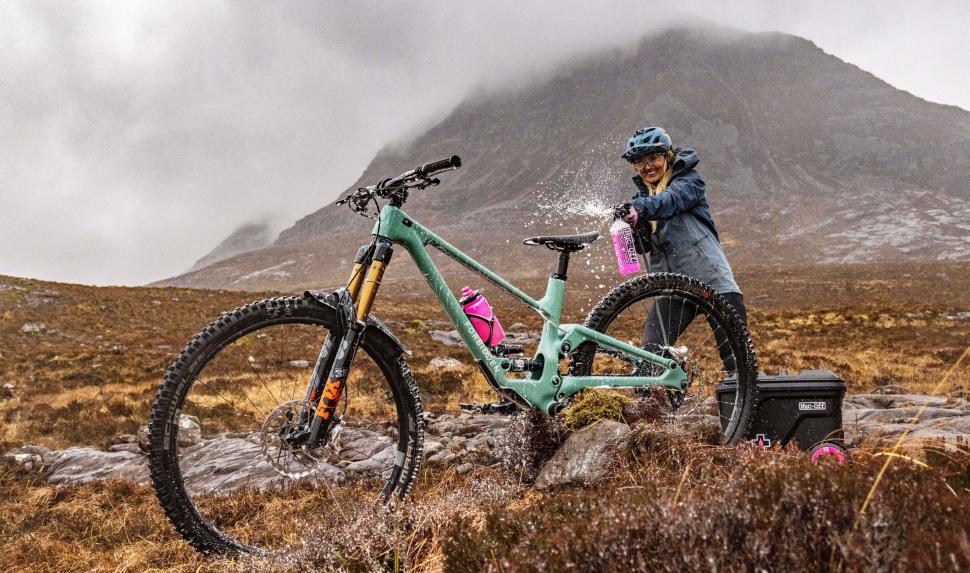

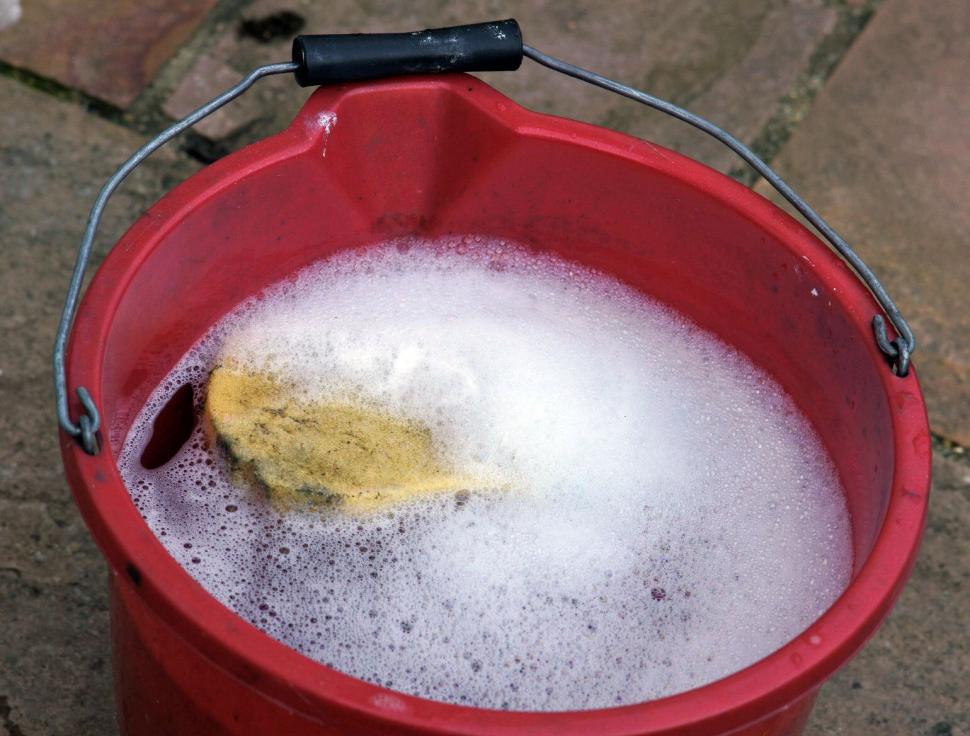
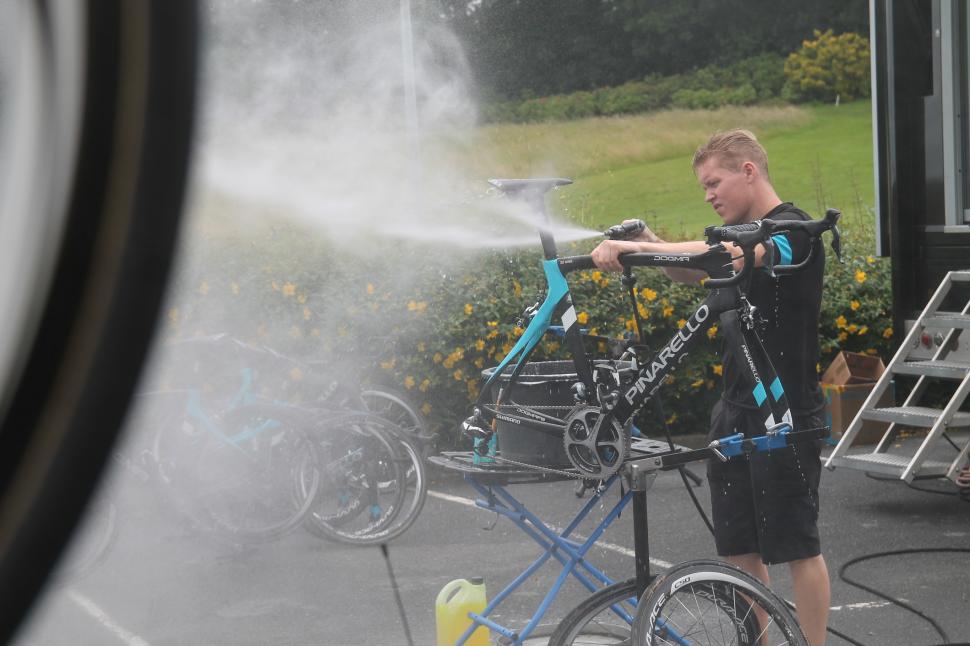


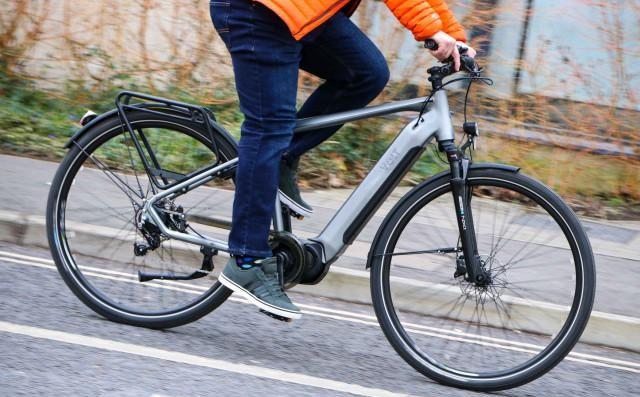
Add new comment
26 comments
Some years ago pressure washer was accepted as most gentle way how to clean the bike. I use pressure washer more than 10 years for expesive road bikes like Colnago C64 or Cervelo R5. Never had a problem. Of course you can not use 30bars or more. Safe pressure is somewhere by 10 bars. I use battery pressure washer Hecht 3025. It can be hard to wash dry muddy MT bike, but washing road bike after winter ride is quick and easy and I use about 4l water.
GCN did an extensive test of this years ago.
easy to find on YouTube and they proved the chance of damaging bearings is minimal.
https://youtu.be/LzbpHGyFzc8?si=t8EUQDIfTqOlBNVW
As long as you stay away from the bearings, surely it's fine? Personally, I don't have a pressure washer, but I use a hose or garden sprayer.
I used to pressure wash my bike until I blasted-off part of a downtube decal when attempting to get some dirt off the downtube. I suspect that the clear coat on the downtube had small chips in it from the front tire and once the high pressure water got into the chip, it blasted off the clear coat and then the decal. So be careful if you use a pressure washer!
SLightly off topic (and a bit late due to holidays) but is this a new article, and does that mean Mat is back after the reported acident a few weeks ago? If so, great to have you back👍
Great if so but IIRC the editors did say at the time of the crash that they had a stock of articles written in advance so things would be appearing under his byline during his recovery.
I killed the wheel bearings with a presure washer years ago , and have never used one since. This has the added bonus of avoiding the horrendus noise presure washers make when in use....
I use a garden sprayer. Cheap and no need to plug it in to a power or water source. And it uses very little water, possibly less than using a bucket. A light mist and a brush go a long way.
I bought one of those with a large capacity and a pump handle to build up pressure, but I find it easier to just use a bucket and old washing up sponges instead as the pressure doesn't remove much dirt.
I've used a bucket and sponge with some WUL for many years. Have taken to removing mud etc first with a soft, dry brush as it means the water in the bucket stays cleaner.
I can understand that hardcore MTBers may benefit from washing the thick layers of mud off their bikes before putting them in the back of the car but if you ride from/to your house then a bucket is simpler, easier and far cheaper. But many blokes love playing with gadgets, especially noisy ones.
Likewise, I have a 'pump up' one, works just fine. Together with a bucket and sponge, perfectly good.
I've used gas station pressure washers on my commuter many many times and I am struggling to imagine how this could possibly harm any Bike when done carefully. Just don't get too close (>3 Meters) and avoid the bearings and other sensitive parts.
Is it okay to use a watering can filled from a water butt in the garden?
Yes
But the water might be quite smelly, so you'll get stinky bike
Surely a lot depends on the pressure that the washer develops?
I've one of these Worx Nitro Hydroshot Cordless Pressure Washer, which has a maximum output of 56bar ... however that's the initial pulse and not constant.
I have mine running at the 26bar Eco setting and 25 or 40deg jet setting on the nozzle, without any problems.
Its used to wash my ebike - and even after a hard winter gravel ride, the only thing I do differently is pop the battery out and put the cover back on.
YMMV
I would probably wouldn't use a pressure washer on an e-bike as I am pretty certain the motor and electrics are only IPX4 and really I would only consider it if the ingress protection was at least IPX6. Obviously it's down to personal choice and if you feel comfortable then fill your boots.
When I clean my wife's e-bike I use soft brush, soapy water and then dry off with a micro fibre cloth.
Leave the bike dirty, less attractive to wrong'uns. (Hopefully)
Drivetrain clean as possible of course. Naturally.
Dust more of a thing at the moment, but mostly it's mud, which I will brush off if I need to do some work. Occasionally I will scrape off big chunks if it's getting a bit heavy.
I've started to wash the rims and tyre walls when changing the tubeless tyres, in the shower, when the better half is not here, shhhh. Stops the mud getting into the tubeless setup.
No.
As I always pack my pressure washer back in its box between uses, it's enough hassle to set up that I only use it on the bike if it's particularly mucky, which I see as a benefit.
I always avoid the bearings and other 'danger' areas. But a word of caution on wheel rims. I learned to my cost that my Campag Zondas have a protective film over their decals and the washer ripped that film to bits, leaving the decals open to future damage. And they have indeed seen a bit of wear since, though thankfully only visible on close inspection.
You have been warned!
I don't use one on my bearings, but I've used it to blast off the rims and tyres, mudguards, and the chain. I blow all the water out of the chain with compressed air before re-lubricating it. I can leave my pressure washer hooked up, and turn the power off to rinse sensitive areas with the same wand.
Is a reduced power 'bike specific' power washer any better than just a hose?
Soapy suds strip out bearing grease just as effectively as a jet washer.
My winter bike gets the soapy suds treatment regularly but I also have to change parts freqently.
My summer bike only gets a rise with clean water when the dust starts to bug me.
Soapy suds shouldn't get past the bearing seals, so I don't see how that's going to strip out the grease. The issue with power washers is if they have enough pressure or used close enough to force water past the seal.
In a word, no
There's a pretty clear through line here that's the process of pressure washing - actually using high pressure jets to scour dirt off - is bad regardless of whether you do it with a hose pipe or a pressure washer, but a low pressure gentle spray to make the bike wet is fine (possible exceptions for e-bikes) regardless of whether you use a hose pipe or a pressure washer to generate the spray.
Is it OK to pressure wash your bike? No. Is it OK to use a pressure washer? Yes. But as a low pressure spray.
Yes it's OK to use a washer to wash your bike. Just don't be silly about it.
proof: all my bikes (including e-bikes), for the last 7 years, after pretty much every ride. Everything still fine, no water ingress, no missing grease, electrics fine, etc etc.